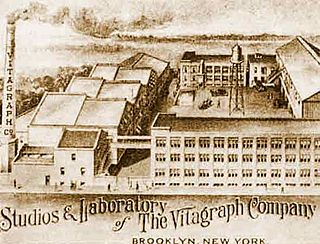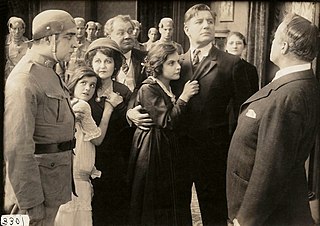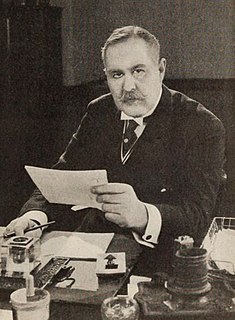Related Research Articles

The House of Tudor was a royal house of Welsh-French origin that held the English throne, descended from the Tudors of Penmynydd and Catherine of France. Tudor monarchs ruled the Kingdom of England and its realms, including their ancestral Wales and the Lordship of Ireland from 1485 until 1603, with five monarchs in that period: Henry VII, Henry VIII, Edward VI, Mary I and Elizabeth I. There is also a sixth Tudor monarch, Jane Grey, who disputedly reigned for nine days, in between Edward VI and Mary I. The Tudors succeeded the House of Plantagenet as rulers of the Kingdom of England, and were succeeded by the House of Stuart. The first Tudor monarch, Henry VII of England, descended through his mother from a legitimised branch of the English royal House of Lancaster, a cadet house of the Plantagenets. The Tudor family rose to power in the wake of the Wars of the Roses (1455–1487), which left the Tudor-aligned House of Lancaster extinct in the male line.

Vitagraph Studios, also known as the Vitagraph Company of America, was a United States motion picture studio. It was founded by J. Stuart Blackton and Albert E. Smith in 1897 in Brooklyn, New York, as the American Vitagraph Company. By 1907, it was the most prolific American film production company, producing many famous silent films. It was bought by Warner Bros. in 1925.

James Stuart Blackton was a British-American film producer and director of the silent era. One of the pioneers of motion pictures, he founded Vitagraph Studios in 1897. He was one of the first filmmakers to use the techniques of stop-motion and drawn animation, is considered a father of American animation, and was the first to bring many classic plays and books to the screen. Blackton was also the commodore of the Motorboat Club of America and the Atlantic Yacht Club.

Alice Joyce Brown was an American actress who appeared in more than 200 films during the 1910s and 1920s. She is known for her roles in the 1923 film The Green Goddess and its 1930 remake of the same name.

The Crusades is a 1935 American historical adventure film produced and directed by Cecil B. DeMille, and originally released by Paramount Pictures. It stars Loretta Young as Berengaria of Navarre and Henry Wilcoxon as Richard I of England. It was nominated for an Academy Award for Best Cinematography as well as for Best Foreign Film at the Venice Film Festival in 1935.

War and Peace is a 1956 epic historical drama film based on Leo Tolstoy's 1869 novel of the same name. It is directed and co-written by King Vidor, and produced by Dino De Laurentiis and Carlo Ponti for Paramount Pictures. The film stars Audrey Hepburn as Natasha, Henry Fonda as Pierre, and Mel Ferrer as Andrei, along with Oskar Homolka, Vittorio Gassman, Herbert Lom, Jeremy Brett, John Mills and Anita Ekberg in one of her first breakthrough roles. The musical score was composed by Nino Rota and conducted by Franco Ferrara.

James Cruze was a silent film actor and film director.

Ralph Michael was an English actor. He was born as Ralph Champion Shotter in London. His film appearances included Dead of Night, A Night to Remember, Children of the Damned, Grand Prix, The Assassination Bureau and Empire of the Sun.

Rose of Washington Square is a 1939 American musical drama film, featuring the already well-known popular song with the same title. Set in 1920s New York City, the film focuses on singer Rose Sargent and her turbulent relationship with con artist Barton DeWitt Clinton, whose criminal activities threaten her professional success in the Ziegfeld Follies.
Mary I of England has been depicted in popular culture a number of times.

Joseph Kilgour was a Canadian actor of the silent film era. He was a well-known veteran stage actor in Broadway theatre before entering silent films. He appeared in more than 50 films between 1909 and 1926.

Bella at Midnight is a fantasy novel for children by Diane Stanley. The story is based on the fairy tale Cinderella. It was first published in 2006.

Mary, Countess von Waldersee, was an American-born philanthropist in Germany. She was married in turn to Prince Frederick of Schleswig-Holstein-Sonderburg-Augustenburg and to Count Alfred von Waldersee, the successor of Field-Marshal von Moltke.

Mary Maurice was an American actress who appeared in 139 films between 1909 and 1918.

The Battle Cry of Peace is a 1915 American silent War film directed by Wilfrid North and J. Stuart Blackton, one of the founders of Vitagraph Company of America who also wrote the scenario. The film is based on the book Defenseless America, by Hudson Maxim, and was distributed by V-L-S-E, Incorporated. The film stars Charles Richman, L. Rogers Lytton, and James W. Morrison.

Wilfrid North, also spelled Wilfred North, was an Anglo-American film director, actor, and writer of the silent film era. He directed 102 films, including short films; acted in 43 films; and wrote the story for three films.

The Little French Girl is a 1925 American silent drama film directed by Herbert Brenon and written by John Russell and Anne Douglas Sedgwick from a 1924 novel by Sedgwick. The film stars Mary Brian, Maurice de Canonge, Paul Doucet, Maude Turner Gordon, Neil Hamilton, Julia Hurley, and Jane Jennings. The film was released on May 31, 1925, by Paramount Pictures.

William Pitt Striker Earle was an American director of the silent film era. He attended Columbia University and worked for a time as a photographer before breaking into the movie business by sneaking onto the lot of Vitagraph Company of America to observe how directors worked. After a few days of this, Earle approached the studio president and was given his first movie to direct, For the Honor of the Crew, a short about a crew race at Columbia University. He subsequently directed a number of features and shorts for Vitagraph. Later he worked with producer David O. Selznick. Earle founded his own, short-lived production company called Amex Production Corporation with J. S. Joffe, and shot the final two films of his career in Mexico.
Nottingham Cottage is a house in the grounds of Kensington Palace in London. As a grace-and-favour property, the house has been frequently occupied by members of the British royal family, as well as staff and employees.

Whom the Gods Destroy is a 1916 American silent drama film directed by J. Stuart Blackton and Herbert Brenon and starring Alice Joyce, Harry T. Morey and Marc McDermott. A tale set during the 1916 Irish Easter Rebellion against the British
References
- ↑ "Womanhood, the Glory of the Nation". American Film Institute. Retrieved December 27, 2020.